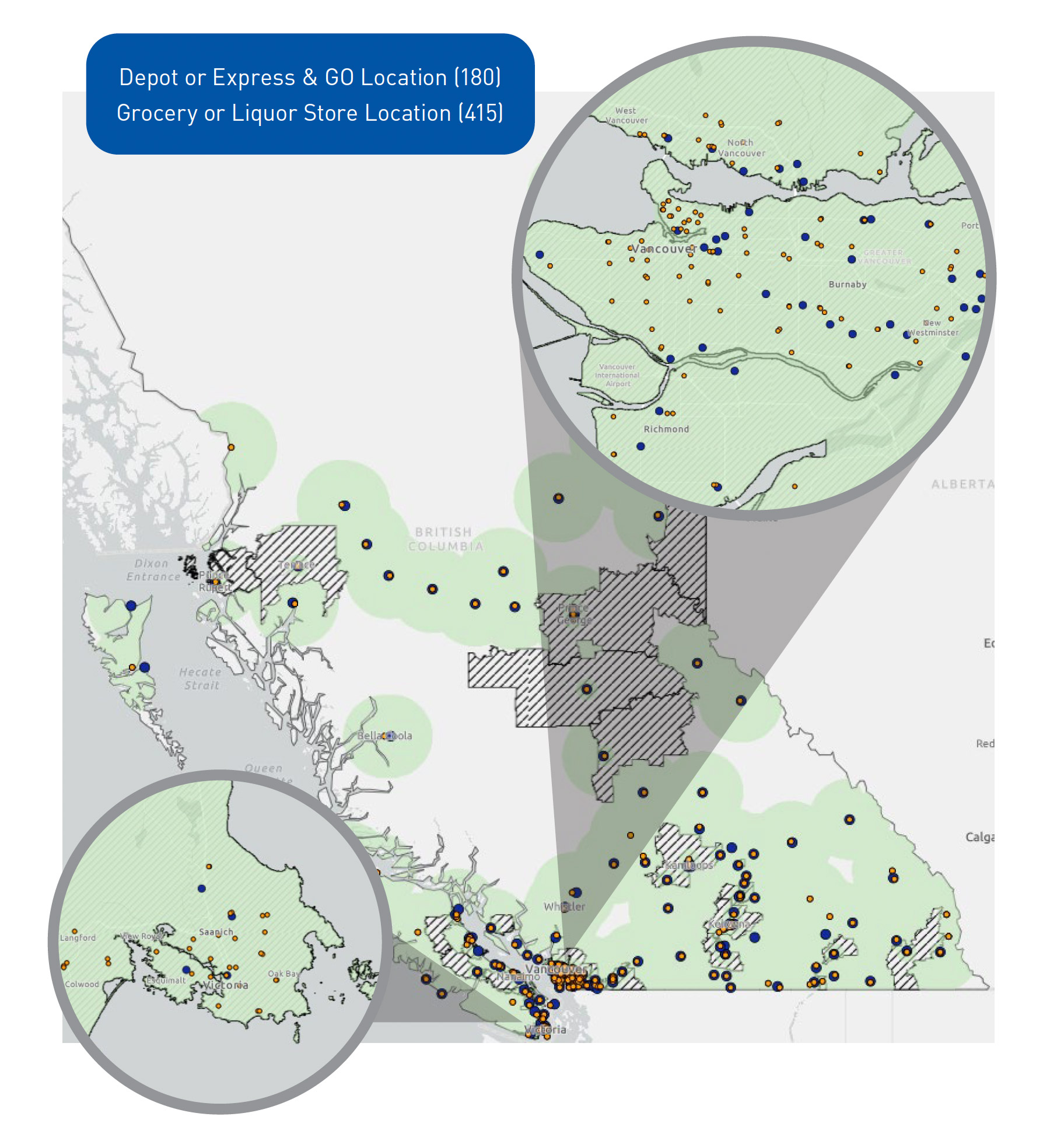4 Collection System and Facilities
- Success of the Return-It network.
- How the collection system works.
- Map of British Columbia showing the collection network and processing sites.
- GIS mapping and accessibility analysis.
4.1 Collection System and Facilities
2023 was both an exciting and challenging year for Encorp’s operations and collection network. Collection volume was up across the board mainly due to increased consumer awareness of milk and plant-based beverage container inclusion in the deposit system. The widespread forest fires in summer 2023 put a strain on the depot and logistics network due to a significant number of road closures, and sadly the depot in Scotch Creek was destroyed because of wildfire. Encorp was able to work with the Scotch Creek depot owner and find a unique solution to continue limited operations and maintain an income during a time of uncertainty. Despite these challenges, Encorp continued to focus on growing the network of collection points, the Express program reached 300,000 registered customers, and through the implementation of new processes and wider use of automation technology, greater efficiency is being achieved across the collection system.
Overview
Encorp’s collection network continues to evolve to meet accessibility requirements and demands of the modern consumer in BC. The collection network now consists of 162 Return-It depots (one fewer than 2022) that have collection agreements with Encorp, two corporate Return-It Express Plus locations in urban centres, and 16 solar-powered, unstaffed Express & GO stations in various locations across BC. In addition, Encorp relies on partnership with retail collection points to round out the collection network. Encorp serviced 219 grocers and 196 government liquor stores that collect the used beverage containers they sell from consumers (maximum of 24 per person, per day).
Encorp continues to monitor redevelopment and densification plans in metropolitan and urban centres which often lead to depot closures. To ensure the long-term efficacy of the collection network, Encorp has been working closely with local governments to ensure urban planning includes a provision for recycling infrastructure and to ensure zoning allows for the siting of convenient collection sites close to where consumers live. Proximity to consumers is key, as research proves convenient access is highly correlated with increased collection rates. Encorp also seeks to expand the number of cashless Express-only sites that offer a different model than a traditional bottle depot and are more suitable to highly densified urban areas with large multi-family developments.
Encorp’s collection network continues to be the backbone of many community-based recycling programs in BC. Encorp’s Return-It network of depots serves as a hub utilized by other approved stewardship programs in BC for collecting and managing end-of-life products and other recyclables in their respective programs. In addition to used beverage containers, BC residents can recycle end-of-life materials such as electronics, small appliances, batteries, paint, motor oil and motorized yard tools, depending on which programs their local Return-It depot participates in.
Focus on Depot Efficiency
Encorp continues to look for innovative ways to provide the most efficient collection network to BC consumers through process improvements and utilizing technological advancement.
Simplified Sort Procedure
The simplified sort procedure, first introduced in late 2021, is now in place at 83% of depots and continues to grow. Encorp’s goal is to have this fully operational at all depots by the end of 2024. Simplified sorts has proven to be very popular for both depot operators and consumers, as it provides depots with more efficient use of their customer areas and saves customer time as it reduces their sorting into only eight container categories compared to the previous 21 counts (or 28 counts with the introduction of milk and milk substitutes in February of 2022). The net result is customers being served more quickly, thereby reducing the amount of time customers must spend at the depot.
More Depots Utilizing Depot Automation
Three additional Return-It depots made an investment in automation technology in 2023, bringing the total number of depots utilizing this technology to enhance their processing efficiency to 16. In some cases, this technology is complete with reverse vending machines (RVMs) for customer self-service, while others utilize technology for more efficient processing of commercial container volume or Express customer volume. Encorp applauds these innovative partners who are making the necessary investments to optimize their operations and serve their communities more efficiently.
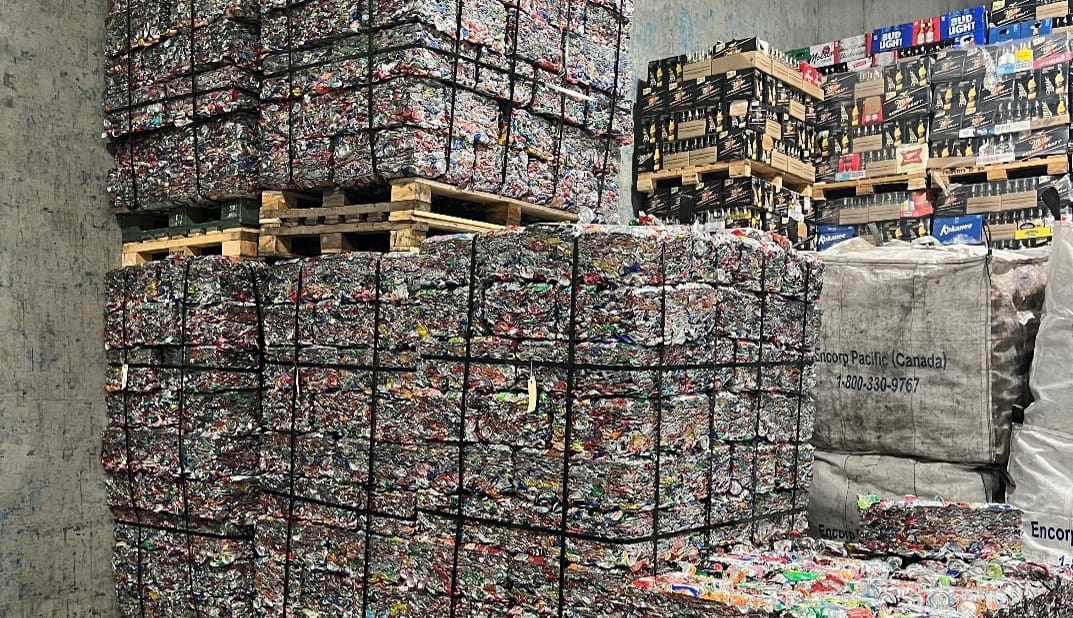
Densification Pilot
Encorp embarked on an in-depot aluminum densification pilot program with two depots in 2023, with a goal of utilizing densification equipment to reduce storage requirements and make aluminum transportation more efficient. When densified into aluminum bricks that form a pallet-sized ‘bundle’, a single pallet can hold the equivalent of approximately 27 bags of non-densified aluminum cans. This vastly reduces the amount of space required at a depot for storing aluminum awaiting collection and allows for less space being required on a truck. In addition, when the aluminum is densified in this way, it becomes ready for direct delivery to end recyclers rather than requiring pre-processing at a processing partner. Encorp will continue monitoring the pilot’s success with the goal of expanding it to more depots in the future.
Logistics Network
Encorp has numerous long-established relationships with dedicated transportation partners who collect material from the collection network for delivery to processing partners where material is sorted and prepared for delivery to end recyclers. These include larger partners servicing metropolitan areas in the Lower Mainland or Capital Regional District and smaller partners servicing the more rural and remote areas of the province. Encorp’s logistics network consists of 43 transport partners who collect material and deliver it to one of 15 processing sites across the province. Within urban centres, Encorp uses dedicated transporters that pick up material from depots, retailers and other collection sites. In rural areas, Encorp utilizes transporters that provide back-hauling, resulting in environmental, logistical and financial savings.
Encorp’s mobile compaction program, which uses Canada’s first-of-its-kind hybrid CNG-electric compaction trucks to move PET, HDPE, gable top cartons and Tetra Pak containers from depots to processing facilities, expanded to five routes in 2023 serving 28 depots. Depending on the mix of containers, by compacting at the point of material collection, each truck could allow for the transport of four to six times more material than using a conventional trailer transporting uncompacted material.
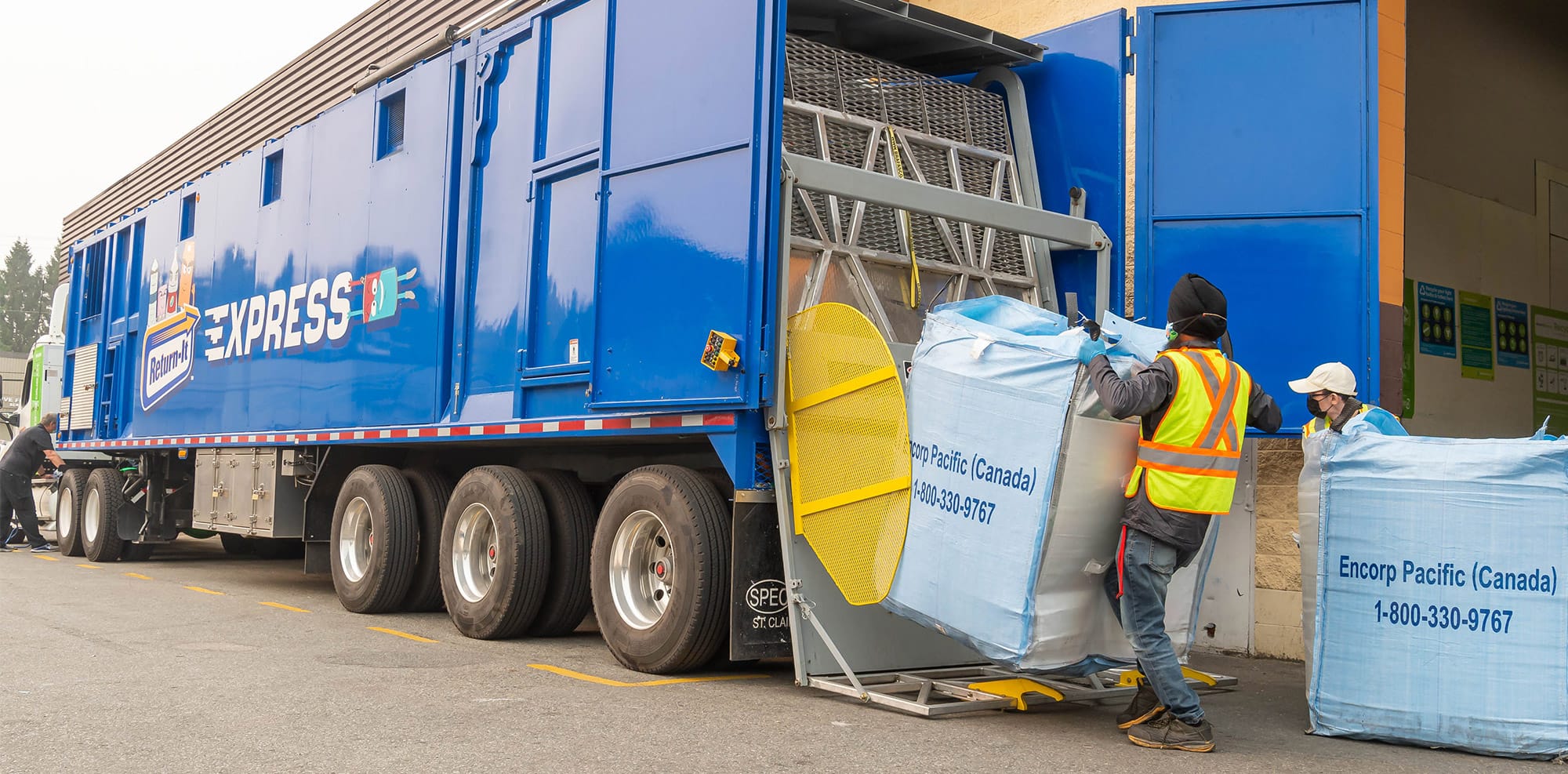
Express
Return-It Express
Registering for Express requires going through the easy registration process on the Express website at express.return-it.ca. Customers collect their used beverage containers in transparent bags and take them to a Return-It Express drop-off location of their choice. Customers print labels with their account information and place them on their bags. The empty containers are then sorted and counted so the deposit refund can be credited to their Express account. Customers can redeem their deposit balance either by cheque or more commonly via e-transfer.
Encorp’s popular Return-It Express program continued to grow, reaching a significant milestone with just over 300,000 registered customers at the end of 2023, which is a 23% increase from 2022. Because of marketing efforts to promote the Express program and from word-of-mouth popularity, Encorp continues to see an average of 1,000 new customer registrations per week.
Number of Express Registrations Each Year
Express continues to grow in volume collected year over year as more consumers participate because of the convenience of the system. At the end of 2023, the Express system accounted for 14% of all the volume collected through depots in the network and accounted for 23% of volume when only considering those depots that offer the Express system.
The Return-It Express program provides consumers with a convenient drop-and-go means of recycling their used beverage containers without the need to pre-sort them for a refund at a depot. In 2023, Return-It Express was offered at 100 locations across BC, including 82 contracted Return-It depots, Encorp’s two corporate Express Plus locations and Encorp’s 16 Express & GO stations.
The Express system continues to be a popular fundraising solution for charitable organizations, sports teams or school groups. Fundraising organizations provide relevant account information to potential donors, who can print off the organization’s labels and drop off their containers. The deposits are then added to the account of the organization(s) they choose to support.
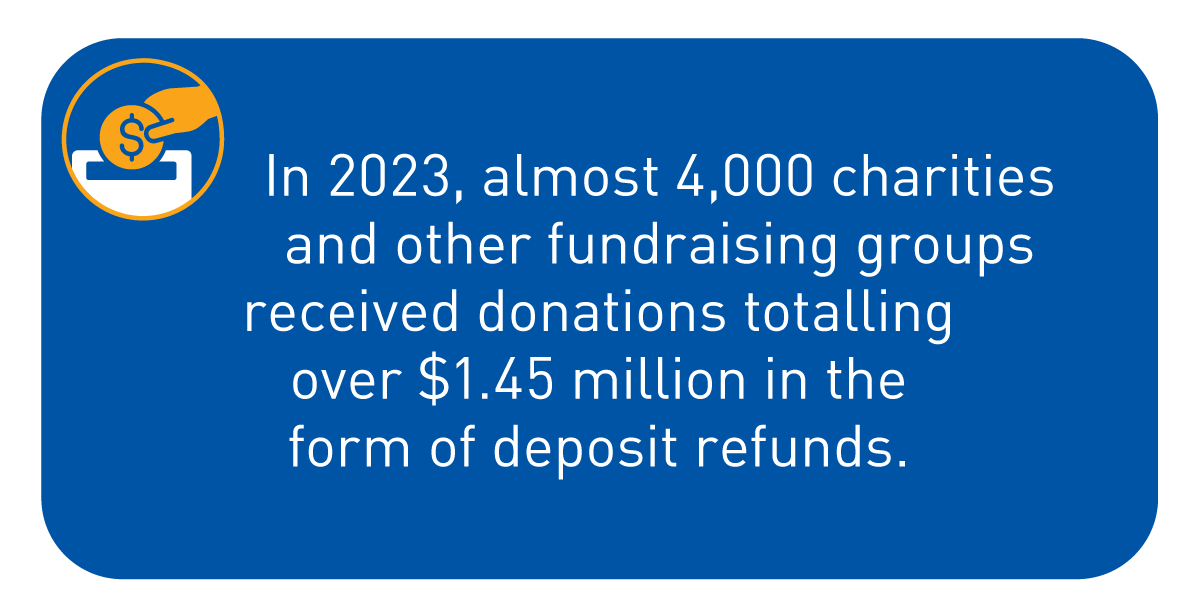
Express & GO
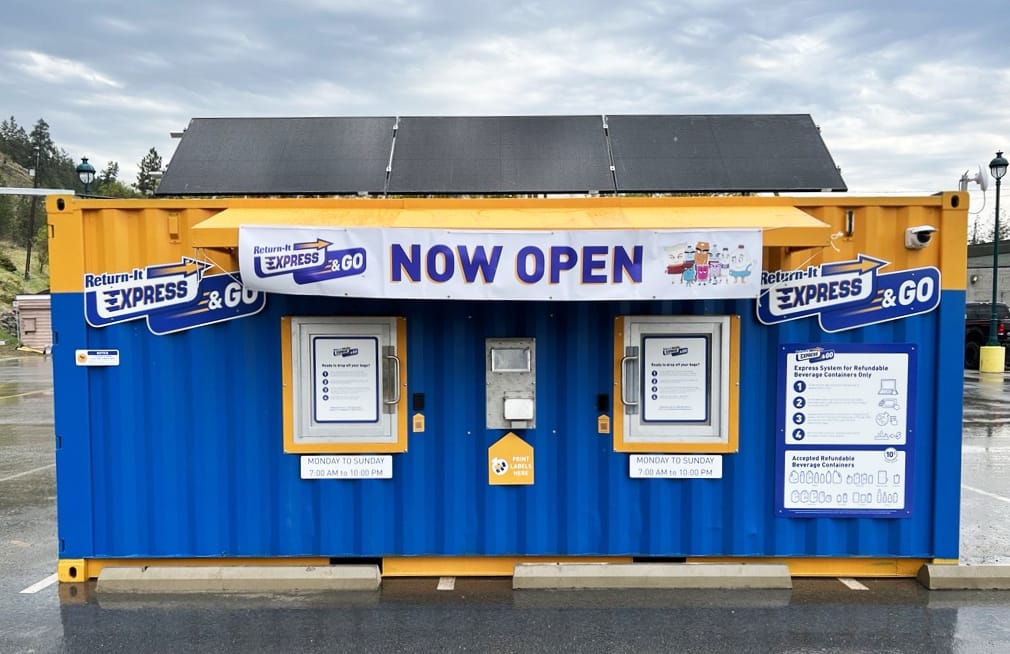
Encorp’s Express & GO stations have become a sought-after option for serving consumers in underserved rural communities or high-density areas where siting a traditional depot is difficult because of rising real estate costs and/or zoning issues. Express & GO helps Encorp to meet the accessibility challenges in BC by providing consumers with additional options for returning their used beverage containers.
Express & GO stations have been deployed in partnership with various stakeholders such as municipal partners, regional district transfer stations, retail partners where an Express & GO station is co-located in their parking lots to serve customers on their shopping trips, or educational institutions to serve student and faculty recycling needs. The system involves transforming used shipping containers into solar-powered, unstaffed drop-off locations for used beverage containers.
In 2023, Encorp opened four new Express & GO stations, which increased the total from 12 to 16 locations. The four new locations opened in 2023 are in Comox, Kelowna, Peachland and Quesnel. Comox Express & GO is located in the parking lot of the Your Independent Grocer™, Kelowna Express & GO is located at the Glenmore Landfill, Peachland Express & GO is located in the Royal Canadian Legion™ parking lot, and Express & GO Quesnel is located in the Extra Foods™ parking lot. Each of these new locations is being serviced by one of Encorp’s local depot partners to count and process customer Express bags.
Express & GO remains a key part of Encorp’s collection network expansion plans. Encorp continues to work with various partners to deploy additional Express & GO stations in 2024 to help increase the recovery rate and provide convenient recycling options to more BC residents.
Express Plus
Encorp continued to operate two successful corporate-owned Express-only collection locations known as Express Plus locations. These locations serve consumers in dense urban neighbourhoods in Vancouver and North Vancouver. These two sites are a model for a clean, bright and modern used beverage container collection experience that suits the unique characteristics of densely populated urban areas. These areas are not typically zoned for traditional bottle depots, and the Express Plus model allows Encorp to provide these consumers with convenient access to recycling utilizing the Express-only cashless model.
Both the Yaletown and Lower Lonsdale locations saw growth in volume in 2023 and continue to be a popular option for consumers in those neighbourhoods. Encorp looks forward to opening additional Express Plus locations in similar neighbourhoods in other BC communities.
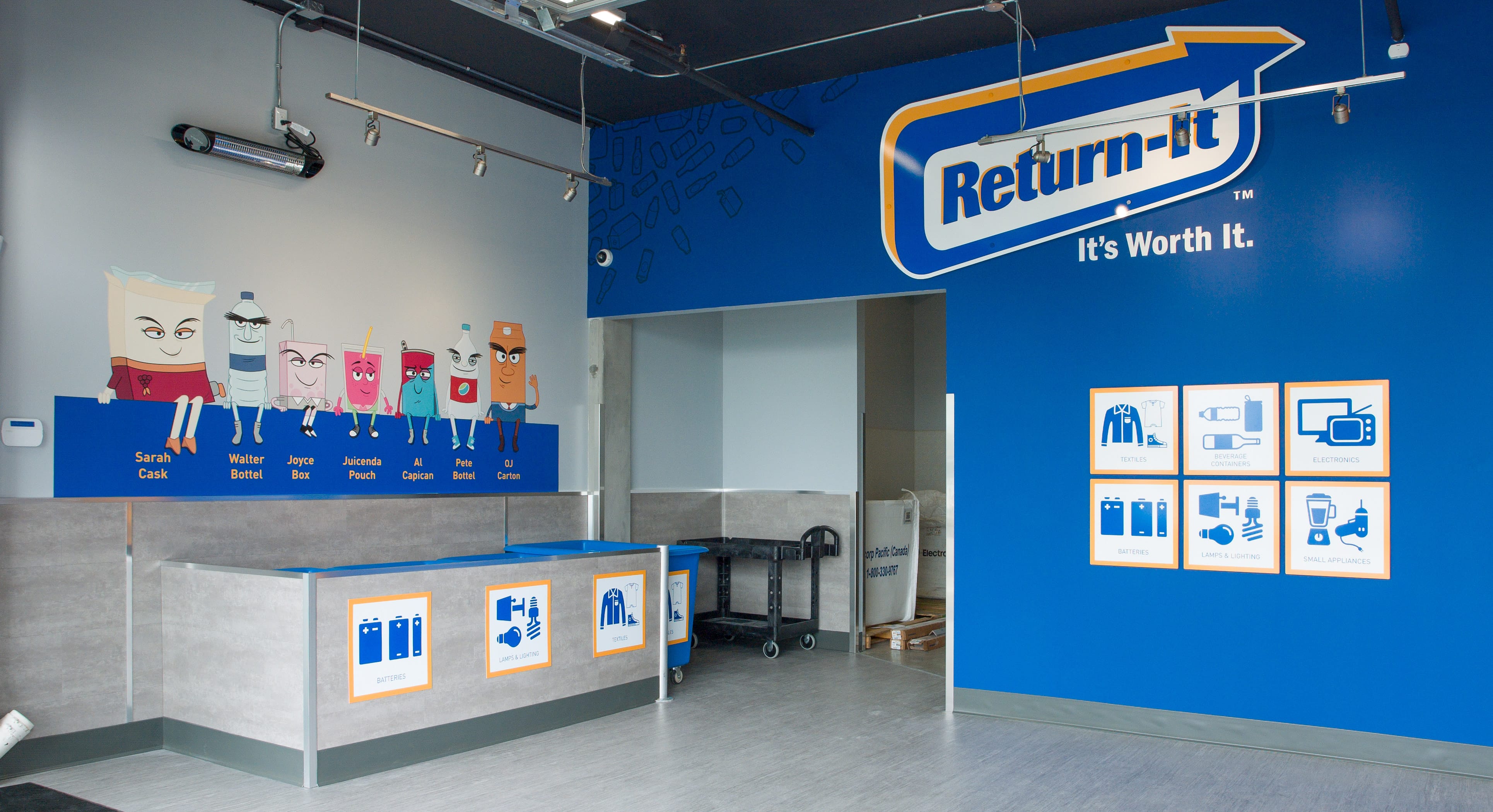
Recycle BC Curbside Collection
It is common for BC stewardship agencies to act collaboratively to help each other achieve their goals. In that spirit, Encorp has a long-established partnership with Recycle BC to ensure deposit-bearing used beverage containers collected through the curbside blue box programs are included in Encorp’s recovery rate. Placing used beverage containers in curbside blue box with other household recyclables to ensure they are recycled is an option used by many BC consumers for various reasons, such as convenience.
Using a well-established and rigid sampling program, Recycle BC is able to determine the total number of used beverage containers collected for recycling through curbside collection across their program. Encorp uses the results of the sampling methodology to include these containers in its recovery rate.
In 2023, containers collected through the Recycle BC channel grew by 3% to over 105 million containers, which accounts for 7.7% of Encorp’s total recovery rate.
IC&I Sector
To ensure all containers collected for recycling are adequately captured and accounted for, Encorp expanded its partnership with commercial waste management companies to gain visibility into the amount of deposit-bearing used beverage containers collected through this channel. These companies collect mixed recyclables from multi-family buildings, commercial buildings, educational institutions and industrial sites and deliver it to material recycling facilities (MRFs) for recycling. Prior to the partnerships with these companies, Encorp had no visibility into the number of containers collected through the stream, despite the fact they were collected for recycling.
Grocery and Liquor Store Collection
Under the Recycling Regulation in British Columbia, retailers are obligated to accept a limited amount of used beverage containers (UBC) from consumers and to provide the 10-cent deposit refund. For this reason, grocers and government liquor stores play an ancillary yet important role in providing accessible collection options for consumers in areas with less convenient access to the depot network in BC. Utilizing this ‘return-to-retail’ channel, consumers returning containers at these stores are limited to 24 containers per day consisting only of containers that are also sold in these retail locations. Combined, grocers and government liquor stores make up 1.6% of total recovery in the network of collection sites. Encorp collected 7.5 million containers from 196 government liquor stores and 14 million containers from 219 grocery stores across the province in 2023.
In response to a request from our grocery partners, Encorp created an expanded Grocer Comingle Program (GCP), which is a revised service model where Encorp assumes direct management and oversight of the return-to-retail collection for all grocer locations who voluntarily register with Encorp. This expanded GCP program standardized the servicing of grocers by Encorp to a wider group of grocery stores regardless of geographic location. In this program, grocers who register for the GCP directly with Encorp will have their deposit refund reimbursements and collection arranged and managed directly by Encorp.
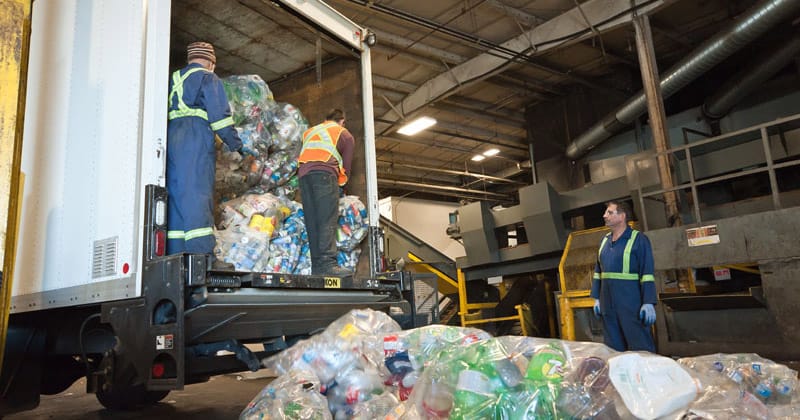
Consolidating Sites
Encorp continues to collaborate with an experienced group of processing partners who take delivery of used beverage containers from the collection network. Once the material arrives at a processing site, it is sorted and baled for delivery to end recyclers, which ensures Encorp maximizes the commodity value of these increasingly valuable resources. Encorp sources end consumers for the recovered and baled materials that focus on re-use and the remanufacturing of these materials into beverage containers. Encorp also works with processing sites to ensure collection sorts are of the best possible quality to ensure maximum value and are in a format that will facilitate remanufacturing. As the market evolves with increased demand for recycled content in new beverage containers, Encorp will continue to collaborate with key processing partners to ensure the combined system can best serve market demands.
Quality Assurance and Count Centre
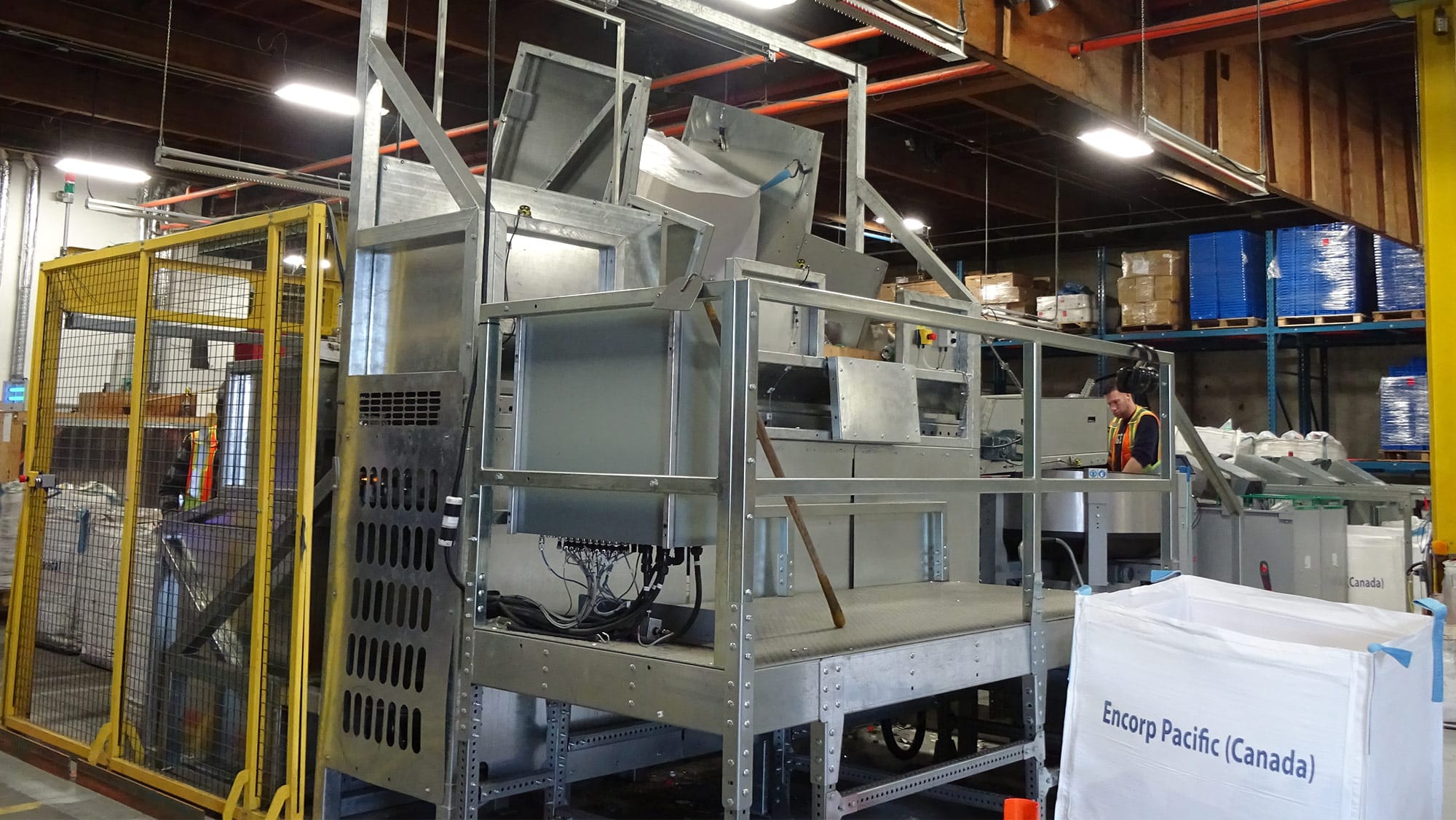
Encorp also operates a multi-purpose quality assurance facility and count centre in New Westminster. This facility is an important part of day-to-day operations for the Encorp program as it conducts critical quality assurance audits, counts some Express bags from Express & GO stations located in the Lower Mainland, counts comingled containers collected from grocers, and conducts sample audits from IC&I partners. This facility is equipped with automated counting and sorting equipment to streamline the counting and sorting of material for delivery to processing partners.
Quality Assurance Audits
Encorp must validate the accuracy of material collected from its independent collection partner network. This work is done at the QA centre and by third-party contracted QA partners at various processing sites in the province. A sample of material collected is segregated and delivered to a QA centre, where the counts are validated, and adjustments are made based on observed variances. Additional audit samples will be drawn from sites that continue to fall outside of the acceptable variance tolerance levels until they return to compliance, at which point they will return to the regular audit sampling schedule.
Grocer Comingle Counting
Encorp has a Grocer Comingle Program for managing containers that have been returned through the grocery store channel. Containers collected from Lower Mainland stores are largely collected and delivered to the New Westminster count centre. Once delivered, they are quickly and accurately counted and sorted using automated counting technology to facilitate the deposit reimbursement to the collecting grocery store.
IC&I Sample Auditing
The final activity conducted at the QA/Count Centre is to complete IC&I sample auditing. Samples collected from IC&I partners are delivered to Encorp’s facility where the number of deposit-bearing used beverage containers are counted to determine what proportion of the total sample is made up of containers in the Return-It program. As additional samples are delivered and counted at the facility, Encorp can extrapolate the results to the total volumes from the various IC&I sources where the samples came from.
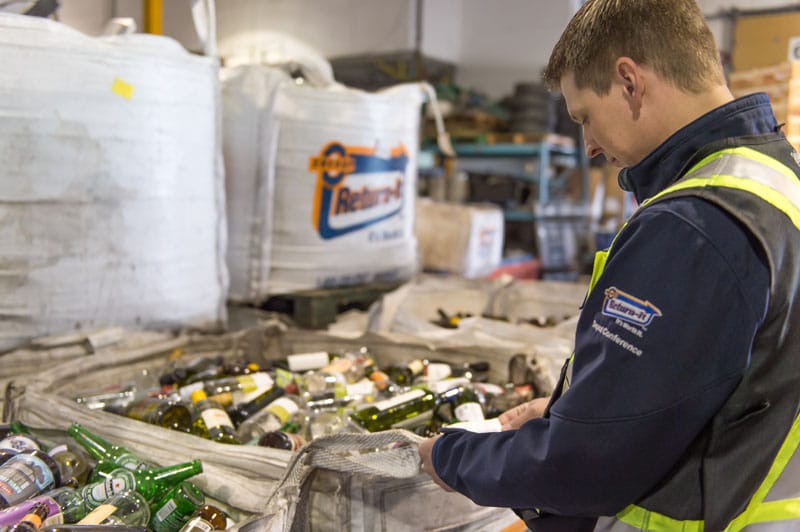
Collection System Technology
Encorp continues to invest a significant number of resources to develop and maintain a Point-of-Return (POR) application that is used at 146 depot locations. The application runs on computer terminals that are used by operators to receive and count empty beverage containers returned by consumers who then receive the appropriate deposit refund.
In 2023, there were three major POR software releases that were done to meet changing business requirements and to improve efficiency in general. Updates were made to the following POR functionalities:
- Shipping module – the POR interacts with another application called Chain-of-Custody (COC) that manages the integrity of the movement of the collected beverage containers as they change possession between the depots, the transporters and the consignees.
- Express counting module – the POR can be used to count empty beverage containers dropped off by customers that use the Return-It Express system. Once bags are counted by the POR operators, a customer’s online Express account is credited with the corresponding deposit.
- Comingle counting module – the POR can also be used by depots to count empty beverage containers that were returned at grocery stores.
- Reporting – the management of every depot has access to more than 30 reports that are used to manage their operations.
In the fourth quarter of 2023, Encorp began replacing computer hardware at these depot locations. This is to ensure that performance and security are always at optimum levels.
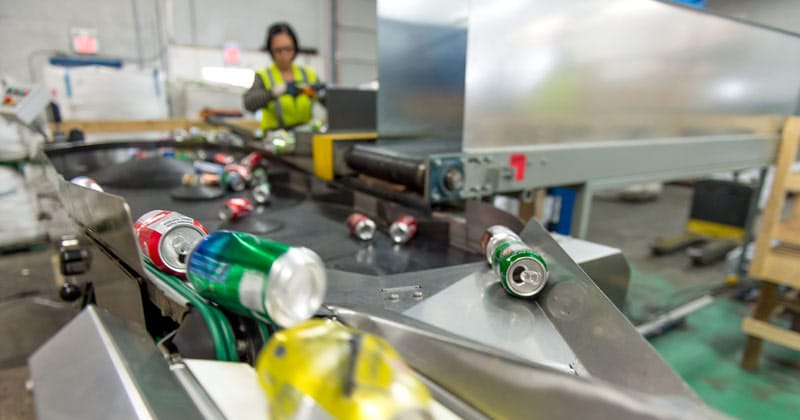
4.2 How the Collection System Works
Encorp’s collection system is composed of a variety of convenient options for consumers to return their used beverage containers for a deposit refund and to ensure they are recycled.
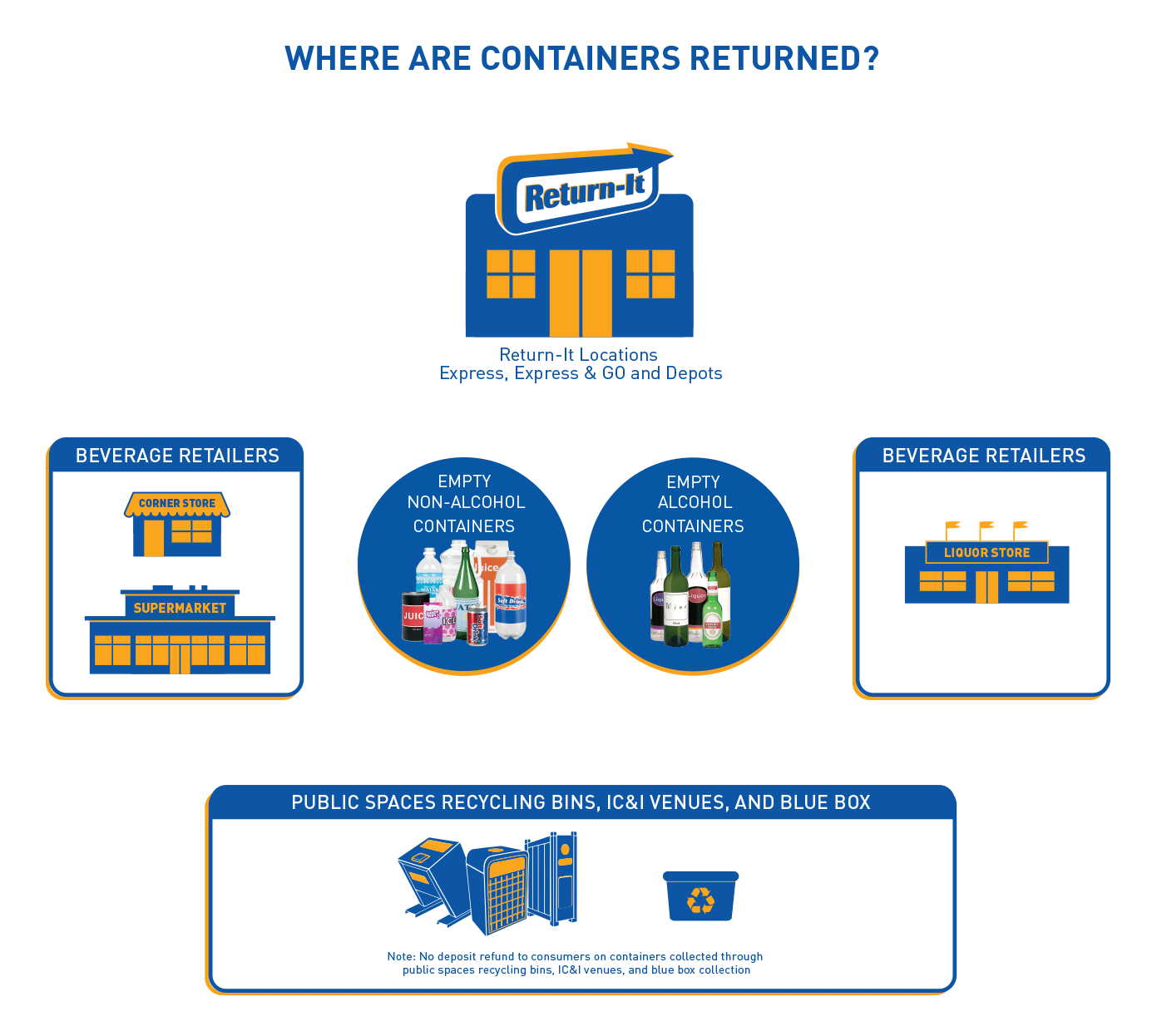
4.3 Collection, Transportation and Processing Map
Encorp’s recycled material network operates through collaboration with contracted collection, transportation and processing partners. Many of these partners have long-term established contracts, while others are selected periodically through a request for proposal (RFP) procedure. The transporter partners collect used beverage containers from Return-It depots or other collection points in the network and deliver them to the nearest approved consolidator. At the consolidator, material is compacted and prepared for shipping to various end market recyclers.
 Express Plus
Express Plus
 Express & GO
Express & GO
 Return-It Depot
Return-It Depot
 Processing Plant
Processing Plant
 Consolidation Site
Consolidation Site
Note: Map outlines collection, transportation and processing for all commodities except glass.
For detailed location search, please visit return-it.ca/locations.
4.4 GIS Mapping and Accessibility Analysis
Since commencing operations in 1994, Encorp has established a comprehensive network of permanent collection locations where the public can conveniently return beverage containers covered within Encorp’s plan.
Encorp has engaged a third-party consultant, Licker Geospatial, to conduct a complete benchmark geographic information system (GIS) mapping analysis to ensure reasonable access as outlined in the Recycling Regulation. The criterion started with the premise of serving more than 97% of the province’s population. Irrespective of which standard is used, Encorp exceeds the 97% accessibility target.
Encorp has adopted a minimum criterion for rural coverage, requiring a catchment population of 3,000 within a 45-minute driving radius. This criterion is notably higher than the industry standard, which typically requires a population of over 4,000. In urban areas (defined as census metropolitan areas by Statistics Canada), the program has set a 30-minute driving radius as its standard. However, most Encorp locations are within a 15-minute driving range, with the exception of the City of Vancouver, where siting new locations has been particularly challenging. Licker Geospatial has completed accessibility analyses for all Return-It facility locations using the 2021 population at the dissemination block level and three different accessibility standards:
1. 4,000 Population Threshold
Defines urban accessibility as a facility within a 30-minute driving radius. For rural coverage (outside a census metropolitan area), assessed for communities where the census subdivision’s total population was equal to or exceeded 4,000, access is defined as passing the standard if it is within a 45-minute driving radius.
2. 3,000 Population Threshold
Identical to the 4,000 Population Threshold, with the exception of rural coverage (outside a census metropolitan area) being assessed for communities where the census subdivision’s total population was equal to or exceeded 3,000.
3. Revised Standard
Defines urban accessibility as a facility within a 15-kilometre radius. Rural accessibility is defined as within 60 kilometres when the community is within 200 kilometres of a census metropolitan area (CMA).
Using specialized Esri ArcGIS Pro processes, drive times and planar distances were calculated from each dissemination block’s centroid to the nearest facility in order to assess whether the resident population had sufficient access under the three standards. Access to 2023 facilities was assessed on the respective years’ road network, although only 2021 population numbers were used, as census data is only available in five-year intervals and 2021 was thus the most accurate data available. Provincially, the following percentage of the population was found to have access to a Return-It facility under the previously described standards in 2023.
Given the goal of 97% of the population (within the standard’s evaluation parameters of rural coverage) of having access to a Return-It facility, provincially, all three standards meet this target.
While the previously described analyses were completed for all Return-It facilities, including grocery and liquor store locations, access varies when only depots and Express & GO locations are considered. Under the same revised standard described previously, 99% of the population has passing access to the depots, Express Plus or Express & GO locations alone, a reduction of only 0.2% compared with when all facilities are included.
Note: Calculations may show slight variances due to rounding.
The differences in access are attributed to the expansion of the four new Express & GO locations in Comox, Kelowna, Peachland and Quesnel. The increased number of total facilities resulted in slightly improved accessibility, especially when examining access to depots only, where the number of specific facilities increased from 177 to 180.
